Chemical Industry
Companies in the chemical manufacturing produce basic chemicals. Except for uniquely formulated specialty, it is a commodity business. the biggest concerns are raw-material cost and quality, production cost and quality, regulatory compliance, and any technique that will enable them to widen their razor-thin margins.
Chemical manufacturers must successfully juggle complex formulas and recipes, comply with regulatory and customer mandates, and manage a wealth of compound-specific characteristics such as shelf life, potencies, unit-of-measure conversions, “best before” dates, catch weight, co-products and by-products, and creation of certificates of analysis. Constantly changing product and packaging variations present operational and inventory challenges and require close interaction between research and development labs, procurement, production, and marketing.
Features
This process spans research and development, including input from customers, suppliers and internal sources, as well as recipe development and testing.
- Recipe and formula management
- R&D Formula
- Inverse bill of materials
- Dynamic formula adjustment
- Co-product/by-product management
- Catch weight
The planning process begins with the forecasting of demand and then proceeds through planning, scheduling, and execution to dispositioning of products to the points of demand.
The buying or “procurement” process encompasses everything from sourcing and bidding to supplier selection, contract awards, negotiations, receipt of goods or services, and payment processing.
- Batch optimization and balancing
- Yield planning and tracking
Sales begins with marketing and lead generation and proceeds through customer and opportunity management, ordering, shipping, and finally to collecting of cash.
Once products have been delivered, services organizations play an important role in customer satisfaction, handling customer calls, problems, complaints, returns, and repairs as needed.
Managing the business includes functions from strategic planning and accounting to reporting, facilities and property management, along with technology and information assets.
- Shelf life and dating
- Centralized quality control regulation
Managing the human capital of an organization requires commitments to recruiting, interviewing, hiring, compensation, bonuses, benefits, and workforce and professional development programs.
Features
This process spans research and development, including input from customers, suppliers and internal sources, as well as recipe development and testing.
- Recipe and formula management
- R&D Formula
- Inverse bill of materials
- Dynamic formula adjustment
- Co-product/by-product management
- Catch weight
The planning process begins with the forecasting of demand and then proceeds through planning, scheduling, and execution to dispositioning of products to the points of demand.
- Capacity Planining
- MPS and MRP
- Safety stock planning with expiry dates
- MRP with Shelf life of products/materials
The buying or “procurement” process encompasses everything from sourcing and bidding to supplier selection, contract awards, negotiations, receipt of goods or services, and payment processing.
- RF Scanning and Labeling
- Batch details by Vendor
- Mix Batches
- Shelf Lifes
- Pallets/Totes tracking
- Vendor/Actual weights
- Raw Material ingredient details
- Quality inspection on Receipt
- Quarantine/Quality Orders
- QC holds
- Disposition
- Expiration/Best-by date control
- Batch optimization and balancing
- Yield planning and tracking
- Picking list by FEFO and location
- Batch order / Picking List consolidation
- Efficiency of line, and Scraps
- WIP items
- Finish Good consumption
- Operations tracing
- Separators
- Pasteurizers
- Starters/Maturation tanks
- Fillers, etc.
- Directed Picking
- Pick/unpick locations
- In-bounds / out-bounds
- Flow Rack locations
- Pallets / Empty pallets
- RF mobiles, labels
- directed put-away
- Shipment Process
- Direct/Indirect Labor costs
- Quality, Production Overheads
- Purchase Price Variances
- Custom cost structure design
- Standard vs Actuals
Sales begins with marketing and lead generation and proceeds through customer and opportunity management, ordering, shipping, and finally to collecting of cash.
Managing the business includes functions from strategic planning and accounting to reporting, facilities and property management, along with technology and information assets.
- Shelf life and dating
- Centralized quality control regulation
- Pallet Ids
- Inventory Adjustment
- Different UOM
- Batch sizes for finished good
Food and Beverage Manufacturing
Specialty food manufacturers have to stay on top of a constantly changing market—which makes planning a challenge. Microsoft Dynamics 365 for Finance and Operation business management software gives you powerful, real-time visibility into customer demand, inventory, available resources, and co-product and by-product production.
See how current information lets you proactively, and more accurately, manage workflow, which can help lower production costs. Quality Assurance with recipe control and traceability will streamline your compliance. Shelf date and Expiration date in planning will reduce the waste.
Poultry
10 years of experience in Poultry industry, solution for the industry is developed in Microsoft Dynamics 365 for Finance and Operation. All operational functionality starting from Live Chicken Production (Pallet Farms to Breeder Farms; Hatchery to Broiler Farms), and Slaughter management are well managed in ERP solution.
Including Warehouse Management system, solution is design to manage to handle huge number (500K/day) of daily transactions including mobile apps.
- Manage your raw material rate
- Quality control of raw material
- Batch management
- All the activities and process involved in pullet farms.
- Process in pullet farms takes 64 weeks
- First 24 weeks of pullet life cycle
- Growing process of chicks for laying
- Flock details per day or week
- Mortality Details
- Good Receipt Note Details
- Flock details per day or week: Feed, Chick, Medicine, vaccines
- Inventory: Current Stock – Birds; Age, Race, Flock number, Gender, hen coop; Tractability
- Internal transfers
- Reports: Feed Consumption; Medicines and Vaccines consumption details
- Analytics: Performance Analysis, Cost of Production, Analysis on Std vs Actual feed, Consumption analysis according to growing guides
- 25 – 64 weeks of life cycle
- Laying eggs from pullet
- Pullet chicks are kept as fixed asset in Finance Ledger Account
- Mortality Details: Good Receipt Note Details; Feed, Chick, Medicine, vaccines
- Inventory : Birds; Eggs, Table eggs, Hatching Eggs on any given date; Current Stock of Birds, Feed, Disinfectant, etc.
- Internal transfers
- Reports: Feed Consumption; Medicines and Vaccines consumption details; Number of Birds Culled, Depletion %, Cracked Eggs, Broken eggs, Total eggs etc. for any given period
- Analytics: Performance Analysis; Cost of Production; Consumption analysis according to growing guides
- Manage Hatchery life cycle : Manages all 21 days life cycle of hatchery operations from setting to hatching
- Egg placement planning : No calculations and calendars are required for your hatchery manager. Delivers you complete egg placement planning report.
- Analyze flock performance : System keeps track of a flock From breeder to hatchery; With Batch Format. Breeding Chick Item Batch carried with all historical tracing data to produced eggs.
- Chicks sales and delivery: Managing chicks sale process; Transfer and Delivery Plan from Hatchery to Broiler farms
- Agreement Management: Manage agreements and all required documents; Subcontractor Management
- Broiler Farming Plan & Distribution
- Feed Requirement Planning
- Generate requirement for feed procurement
- Broiler Farmer Production cost: Calculate exact production cost per kg and per bird.
- Daily Flock Details; Good Receipt Details : Feed, Chick, Medicine, vaccines
- Inventory : Birds,Medicine, Vaccination, Feed
- Analytics : FCR (Feed Conversion Ratio); EEF (European Efficiency Factor); Cost of Production of Bird/Kg; Analysis of actual growing data, mortality %, FCR according to guides
- Starts with Broiler Cutting Plan
- Live chickens carried to Slaughter site and read for cutting
- Receipt weight integration, vehicles are weighed 2 times and recorded receipt qty.
- Keeping receipt control data (mortality, defects, etc..)
- According to Broiler Cutting Plan: Slaughter site knows receipt data in slaughter slaughter by vehicle detail; All vehicle weight data records fully and after unloading operations.
- Catch Weight Items are used in Sales, Production and Delivery
- Sales orders are receipt and controlled and edited (increase or decrease) according to actual cutting plan.
- Sales order fulfillment analysis report (Ordered, Committed, Realized Qty of Sales Report)
- Tracebility from the breeder farms to the processing plants
- Tracking Dimension
- Breeding Chicks are followed by Item Card with Batch Controlled
- Generate specific Batches contains data of flock number, age, coop
- Cost of production per Egg
- Cost of production per Hatching Egg
- Cost of production per Broiler chick
- Cost of production per Kg meat of Broiler Bird
- Cost of production per Kg of Feed
Features
Complex product configurations, engineering revisions, drawings.
- Quote to an order for complex product configurations and accessories
- Handling kitted and phantom items
- Allowable and prohibited combinations for configurable products
- Pricing based on configuration
The planning process begins with the forecasting of demand and then proceeds through planning, scheduling, and execution to dispositioning of products to the points of demand.
- Finite capacity planning
- Support MRP and Kanban planning
- Production Scheduling
- Promise dates
- Safety stock level
The buying or “procurement” process encompasses everything from sourcing and bidding to supplier selection, contract awards, negotiations, receipt of goods or services, and payment processing.
- Subcontracting operations
- Generate requirements based on demand planning
- RFQ and drawing management thru vendor
- Drop shipment
- ASN
- Vendor performance
- Prototype drawing, item, BOM, productions, etc.
- CAD integration
- Item revision history
- PLM
- BOM construction
- Engineering Change Request
- Shop Floor management
- Forward backward Re/scheduling
- Data entry from kiosk and/or RF terminals
- Traveler cards
- Serialized production
- RFID capability
- Backflushing
Sales begins with marketing and lead generation and proceeds through customer and opportunity management, ordering, shipping, and finally to collecting of cash.
- Integrate with third party logistic companies
- Commissions
- Maintain various price list
- Shipment date recommendation
- Allocate inventory
- EDI capability
- Sales goals, and actuals
- Configuration – Quote to order
Once products have been delivered, services organizations play an important role in customer satisfaction, handling customer calls, problems, complaints, returns, and repairs as needed.
- Case management
- Product warranty information
- Repair activities
- Capture item history
- RMA process
- Return / replacement item
- Dispositions
- FDA compliance
- Quality inspections
- Non-Conformance Reports
- Training
- Customer Complaints
- Corrective and Preventive Actions
- Warranty Tracking
- Document management
- Supplier Quality
Managing the business includes functions from strategic planning and accounting to reporting, facilities and property management, along with technology and information assets.
- Serial numbers tracking
- Documents and approvals
- Cycle counting
- Drop shipment
- Work flows
- Maintenance order
- Field Rep interface
Managing the human capital of an organization requires commitments to recruiting, interviewing, hiring, compensation, bonuses, benefits, and workforce and professional development programs.
Make-to-Order (Configuration based) Manufacturing
Manufacturing operations or assembly process start after customer order is received. When demand is confirmed, pull-type supply chain operation starts. Inventory management for parts, and semi-finished/prepared parts are very critical.
Operation traceability thru sales orders, job shop labor and material scheduling, promise date, delays, packaging and shipment, customer site installations, after sales support are basics for configuration based manufacturing companies.
Results
Implemented projects in manufacturing industry
CHEMICAL INDUSTRY
POULTRY, MEAT and FISH INDUSTRY
FOOD INDUSTRY
DISCRETE MANUFACTURING
Ask for personalized presentation
25 case studies are published globally, one of them has “Customer Excellence Reward” by Microsoft .

